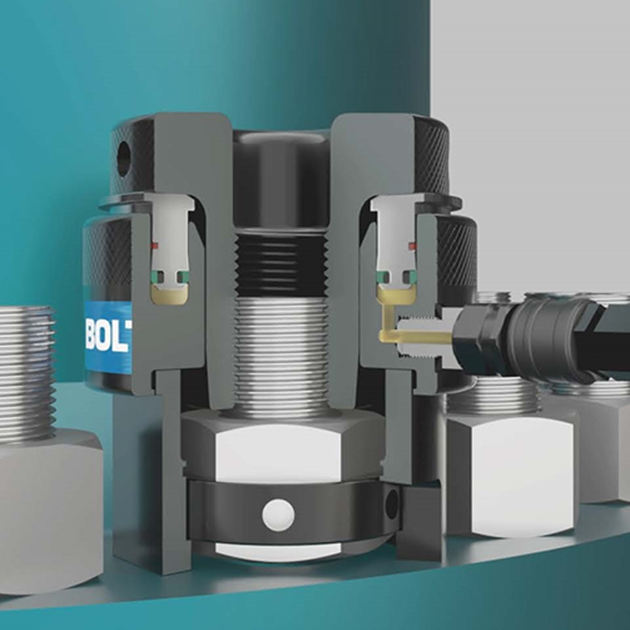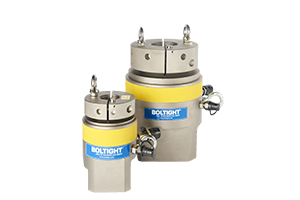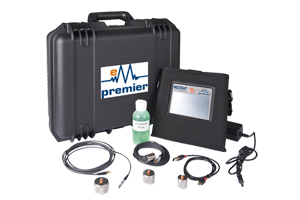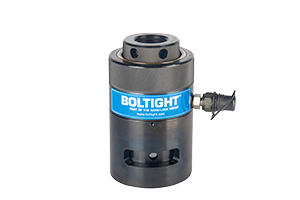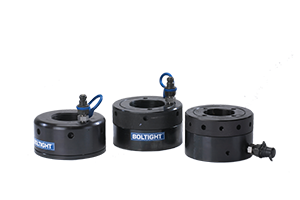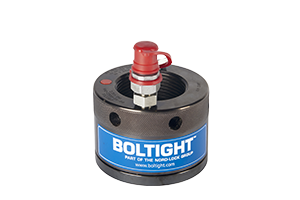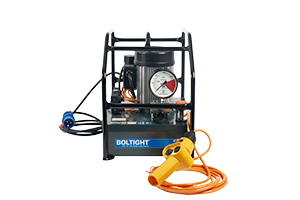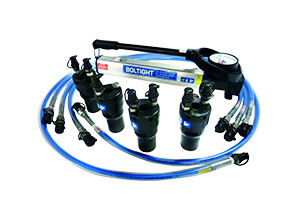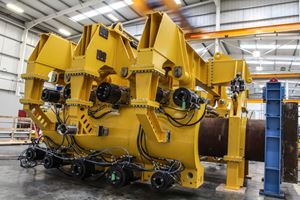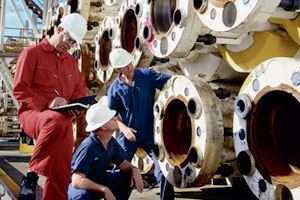- A tensioner is attached to the bolt or stud
- High pressure hydraulics are used to axially stretch the bolt
- Bolt stretch/elongation creates the clamping force, as the bolt is stretched, the nut lifts clear of the flange
- An access window in the tensioner allows the nut to be turned down with very little friction
- When the hydraulic pressure is released, the nut traps the stretch in the bolt retaining the ‘load’
Advantages
- Tension is applied directly to stretch the bolt, meaning that no friction needs to be overcome
- Applied load is very accurately controlled, as it is directly proportional to the pressure applied to the hydraulic bolt tensioner
- Loss of load between applied and retained load after tensioning is 20% less than frictional loss associated with torqueing
- Accurate residual load outcomes due to calculable load loss
- Tensioning can be repeated
 |
